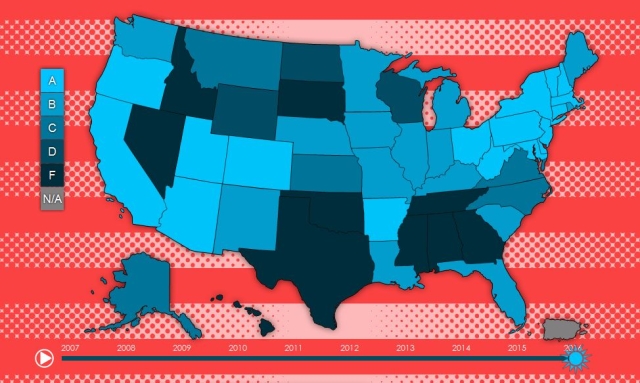 The Interstate Renewable Energy Council (IREC) and Vote Solar have released their new “report card” that grades all 50 US states on their rankings for two important clean energy policies, namely solar net metering and interconnection standards.
The Interstate Renewable Energy Council (IREC) and Vote Solar have released their new “report card” that grades all 50 US states on their rankings for two important clean energy policies, namely solar net metering and interconnection standards.
If you’re considering going solar at home or at your business, you’ll want to understand how much money it will cost and how much you’ll save with solar, and while those numbers are good (great, in some places), it can vary quite a bit depending on where you live. Two of the biggest factors that influence the economics of home solar are the variances in interconnection procedures (the regulations and processes that govern how a rooftop solar array connects to the electric grid) and the rates and policies surrounding net metering (which credits solar array owners for the electricity generated by their systems), and those factors are far from standard across the United States.
To help potential solar homeowners understand the ins and outs of solar economics where they live (or where they are planning to move), Vote Solar and IREC have just released their updated report on the state of solar policies across all 50 states. The latest Freeing The Grid report, which is the ninth version of this resource, shows consumers the best and worst states for going solar, based on the two basic criteria of net metering and interconnection standards, and while it’s not a be-all-end-all solar report, it could be a useful tool for quickly evaluating the choice to go solar in some states.
Here’s a brief video primer on the two issues:
“Our nation’s energy future is being charted today in the halls of state regulatory forums and legislatures. We have consumers demanding more access to clean, affordable electricity than ever before, and Freeing the Grid shows which forward-looking states are working to clear the way for consumer investment in solar power and its many benefits to our communities, our economy and our climate.” – Adam Browning, Executive Director of Vote Solar
According to the 2015 Freeing the Grid report, more than two-thirds of US states garnered either A or B grades on net metering policies, but several states saw their grades drop considerably from recent solar policy decisions, including former top solar states Nevada and Hawaii, which both got an F for net metering.
When it comes to interconnection procedures, about half of the states in the US received A or B grades, with five of them (Hawaii, Illinois, Mississippi, New Hampshire, and North Carolina) improving their interconnection grades last year, and just one, North Dakota, seeing a lower grade for 2015.
“More states across the country are actively working to adopt best practice interconnection standards, which help support and enable growth of customer-generated energy sources. In addition to ensuring the safety and reliability of the electric grid, these technical standards also enable fair, affordable and efficient consumer access to renewable energy. States with updated, best practice interconnection rules and policies in place enable an improved experience for utilities, regulators, renewable energy developers and consumers alike.” – Sara Baldwin Auck, IREC Regulatory Director
See the website for the full Freeing the Grid 2015 report.
Leave a Reply
Solar Savings Calculator
Get the facts. Find out exactly how much solar will save you, including which Tax and Financial programs you qualify for!







